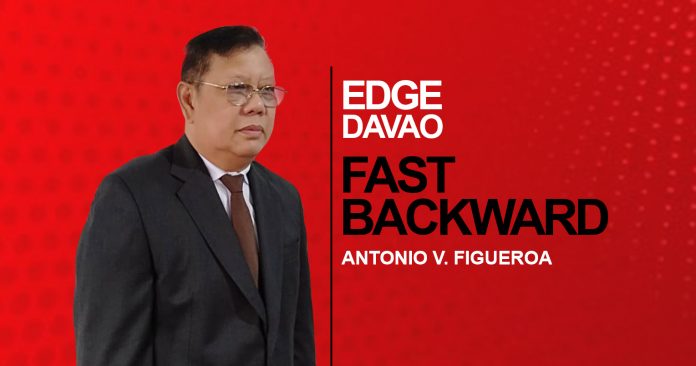In the prewar period, one of the most comprehensive and popular almanacs used as reference was the Manila City Directory published by the Philippine Education Company, Inc., which was founded in 1903 by Verne Miller, a Thomasite educator, who arrived in the country in 1901.
Before the war, the company was the biggest bookstore of its kind in southeast Asia. It originally opened at 101 Escolta Avenue, Manila, but later moved to the Makati Commercial Center after the liberation. It eventually closed shop after over seventy years of operation.
A review of the directory’s 1941 edition provides a window into the past on who were the personalities that ran Davao City before it was drawn into the global conflict on December 8, 1941. The 1,325-page book includes department heads, judicial profiles, and Masonic somebodies.
At the time of its issuance, Pantaleon A. Pelayo was the city mayor of Davao after he won the 1940 general elections. He was presiding officer of the City Council that was comprised of Alfonso G. Oboza, city engineer and ex-oficio council member; Nicolas R. Tolentino, city treasurer and ex-oficio councilor member; Concepcion B. Panganiban and Antonio Habana, Jr., appointive councilors; Fundador R. Villafuerte, Pedro C. Quintain, and Remedios A. Ponferrada, as elective councilors; and Placido Lorenzana, elective councilor and secretary of the council.
Placido Lorenzana was the secretary to the mayor; Efren C. Peña, assistant secretary; Ruperto Lizada, deputy to the mayor; Jaime San Agustin, city veterinarian; John D. Stumbo, acting city schools’ division superintendent; Leocadio Gozun, acting city auditor; Antonio Tecson, chief of the fire department; and Cresencio T. Balasbas, acting librarian of the Davao City Branch Library.
Romualdo Quimpo, meanwhile, was the governor while Apolinario Cabigon (later congressman) and Ricardo D. Miranda (later governor) were provincial board members. Rep. Cesar M. Sotto was congressman while P. de la Cerna was acting provincial treasurer.
Davao City, at the time, was under the Ninth Judicial District with Salvador Abad Santos as the presiding judge. The magistrate was assisted by Hilario C. Rodriguez, as clerk of court; Bernabe C. Frias, as deputy clerk of court; and Aproniano G. Castillo, as provincial sheriff. Appointed as the municipal judge was Delfin Hofileña, and his sheriffs were Aproniano G. Castillo, Jose Villanueva, Bernardino Bolcan, and Sancho C. Canoy.
The other city department heads were Engr. Alfonso G. Oboza, as chief of the Engineering & Public Works, and Francisco Alib, as assistant city engineer. Tolentino, the city treasurer, led the finance department with Sergio Salvaleon as assistant city treasurer. Alfonso Soberano assumed the post of city health officer with Vicente A. Gahol as his assistant.
The legal department, in the meantime, comprised of Angel H. Mojica as ex-oficio city attorney, and Manuel G. Cabaguio as first assistant city attorney. Lt. Manuel D. Jaldon was the chief of the police department, while his assistant and secret service chief were Federico A. Melocoton and Guillermo N. Teves, respectively.
Also appointed were the justices of the peace (the equal of a municipal trial judge) with their corresponding municipal district assignments, namely: Vicente Calanog, for Caraga and Manay; Prosperador C. Danao, for Cateel and Baganga; Anacleto Cruz, for Compostela; and Jose Mañguno, for Kapalong ang Camansa; and Ismael Veloso, for Malita, Caburan, and Batulaki;
Meanwhile, Arsenio Acurentes was assigned to oversee Mati and Lupon; Jose P. Cruz, for Monkayo; Valerio P. Reyes, for Tagum and Saug; Manuel P. Castro, for Samal and Pantukan; Rafael F. Santos, for Santa Cruz; Sulpicio E. Platon, for Sigaboy and Surup.
Davao Penal Colony was not assigned any justice of the peace and was also without a chief. Pascual Robin, however, assumed as assistant superintendent.




